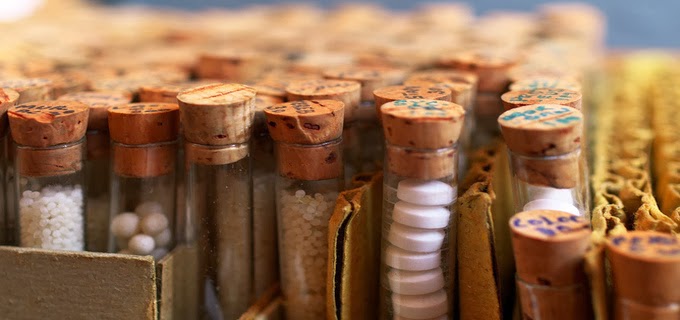The homoeopathic physicians have noticed that when a
person is given iron excessively, his colour becomes yellow or greenish. The face
looks greasy, as if waxed. The skin over the entire body turns the same. There
is a tendency to bleed, with the blood being thin and watery. Blood clots can
also form, which are reddish in colour, whereas the blood clots formed as a
result of poisoning are usually darkish in colour. The appropriate homoeopathic
treatment for this kind of condition is Ferrum Metallicum, commonly called
Ferrum Met.
One sign of Ferrum Met is that the entire body feels weak.
Even mild physical activity causes tiredness. In Acid Phos, the body remains lethargic
constantly. In the case of Ferrum Met, the weakness
ensues suddenly after a trifling job, as if the torch containing old
batteries may light up and then turn off abruptly. As long as the patient does not
move, he is not aware of his state of weakness. Even if he walks a little or
very slowly he will still become weak. But if he remains lying down or sitting
for long time he may still feel weakness because by remaining in one state, the
previous aches in the body flare up. On walking fast, both weakness and pain
become pronounced. Even a long conversation can exhaust him physically. In spite of being anaemic, the patient’s
face is somewhat flushed, which
is known as a False Plethora. Both cheeks become flushed and especially in
women, it resembles the blushing as a result of feeling shy.
The menstrual
bleeding continues over a long period and there may be only a day or two
without bleeding. The bleeding is thin and light yellowish in colour. It may
sometimes contain the shreds of the inner lining of the uterus. In spite of all
this, strange it is that the face still has a reddish glow. Such women
frequently abort due to the vaginal irritation. Similarly, the prolapse of the
uterus is not unusual. Like China, in
Ferrum Met there is decrease in the number of red cells. The face however
remains flushed and there may be redness and pallor on the face, alternating
with each other. Similarly, the patient feels extremely chilly during the onset
of fever.
Regarding the gastric symptoms, the patient has either a voracious appetite or no
appetite at all. He hates sour things. On taking them, the patient develops
diarrhoea. Soon after taking the food, he may regurgitate undigested food
without the feeling of preliminary retching. Sometimes, vomiting is preceded by
nausea as well. Such vomiting follows taking food, immediately or after
midnight. The abdomen becomes bloated with wind. The patient will not be able
to digest an egg. Even if he likes to eat eggs, they do not suit him. At night,
he passes stools consisting of undigested food, but if he passes stools during
the daytime, it is soon after taking food, which is not accompanied by pain.
Sometimes, the stools are hard and there is associated pain in the back and
gripe at the rectum. There is a tendency towards prolapse of the rectum. Some
patients lose control over passing urine.
This is more common during the day. Regarding the symptoms pertaining to the
lungs, there is a feeling of pressure
over the chest and a difficulty in breathing. The voice becomes
hoarse. The cough is dry and comes in the form of repeated bouts, sometimes
associated with passing of red blood (haemoptysis). There are rheumatic pains in the shoulders as well as in the
lower part of the back. Similarly, there is pain
over the buttocks, calves or in the soles of the feet. All these
symptoms become somewhat relieved on light movement.





